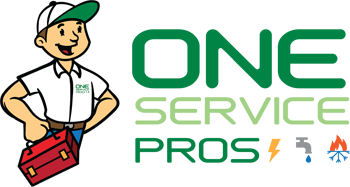How Heat Pumps Heat and Cool Your Home
Air conditioning has been a staple of most American households for well over 50 years. But it’s only been in the last 25-30 years that heat pumps have become common place. Heat pumps are nothing new. In other parts of the world, heat pumps are referred to as reverse cycle air conditioners. That gives you a hint as to how they function.
The biggest difference between heat pumps and conventional furnaces is that heat pumps don’t actually produce any heat. The refrigerant within the system does all of the heavy lifting by being changed into a liquid or a gas. If it’s in a liquid, unpressurized state, the refrigerant is cold. In a gaseous, pressurized state, it’s hot.
In effect, a heat pump’s primary purpose is to extract heat from either the inside or outside air and move it around. In the summer, the refrigerant absorbs the heat from the inside of the home and transfers it to the outside. Even in the winter, there is enough heat to be absorbed by the refrigerant to be transferred into the home.
How a heat pump cools your home (cooling mode):
- Liquid refrigerant is pumped through the coils in the indoor unit. A fan blows the warm, indoor air over the cold liquid refrigerant in the coils. This causes the heat energy from the air to be absorbed by the liquid refrigerant, resulting in the remaining cool air being distributed throughout the home. Note: It’s important to remember that refrigerant does not function in the same way water does. Refrigerant has a low boiling point (usually around 40°-50° F), which means it reacts to low levels of heat energy more easily.
- Once the heat from the inside of the home has been adsorbed by the refrigerant, it turns into a gas and is transferred to the compressor which pressurizes it. Pressurizing it makes it heat up even more. The pressurized, heated refrigerant is then moved to the outdoor unit.
- Once moved to the outdoor unit, it is forced through the outdoor coil. A fan blows the now-cooler outside air over the coils to cool the super-heated, gaseous refrigerant. This begins to condense the gas back into a liquid.
- After the refrigerant begins its transition back to a cooler, liquid state, it moves back toward the indoor unit where an expansion valve de-pressurizes the liquid. The refrigerant is now cooled again, and the process starts all over.
How a heat pump heats your home (heating mode):
- When you switch your heat pump system from “cool” to “heat”, there is a device called a reversing valve that reverses the flow of the refrigerant. Instead of pressurizing the refrigerant before going outside, the freezing cold liquid refrigerant is sent outside to collect heat energy from the outside air.
- Since refrigerant does not freeze at 32° F like water, it can be sent to the outside coil to collect heat from even below 0° F temperatures. The “warmer” outside air will be attracted to the liquid refrigerant which turns it into a cold gas. Once it’s sent to the compressor, it pressurizes the cold gas which makes it hot.
- After that, it can be sent to the inside unit which blows inside air over the coils of hot, gaseous refrigerant. The cooler inside air transfers the heat away from the coils and into the home.
- To complete the journey, the still-hot gas is sent back to the expansion valve which turns it into a cold liquid and back to the outside to collect more heat energy.
Although the process can be mind-bending, the technology and mechanics are quite simple. With that simplicity, comes low maintenance and operation costs. In fact, heat pumps only require 25% of the energy of a traditional combustion furnace. Many existing air conditioning units can even be retrofitted to allow for a heating option.
Curious if you have a heat pump? Check on your thermostat to see if you have an “EM Heat” option. If you do, you likely have a heat pump. Heat pumps have a backup electric heater that can pick up the slack in freezing conditions if needed.
If you’re interested in HVAC replacement, repair, or maintenance, ONE call, we can do it all! ONE Service Pros have helped thousands of happy customers make the right choice to make their home comfortable in any season! Our HVAC, Plumbing, and Electrical pros can solve any challenge you may be facing. Call 865-351-0241 to schedule your pro appointment today!
You May Also Like

Chop, Stir, and Remodel: Transform Your Kitchen with One Service Pros
Are you dreaming of a new kitchen but unsure of where to start? A kitchen remodel is one of the most exciting…

How Do Heat Pumps Heat and Cool Your Home?
Heat pumps are versatile systems used for both heating and cooling homes. Using a heat pump, whether it’s an air-source heat pump…

Affordable Upgrades for a High-End Look Bathroom
A bathroom remodel can be a transformative project, turning a tired, dated space into a luxurious, spa-like retreat. However, the perceived high…
